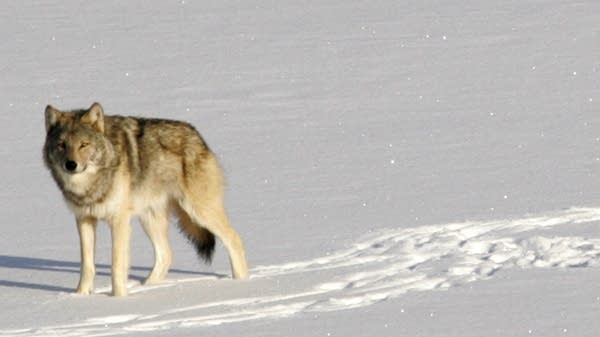Officials prepare to relocate wolves to Isle Royale

Go Deeper.
Create an account or log in to save stories.
Like this?
Thanks for liking this story! We have added it to a list of your favorite stories.
A mission to rebuild the depleted wolf population at Isle Royale National Park is getting underway in Michigan and Minnesota, as specialists prepare to trap six to eight of the predators on the mainland and fly them to the Lake Superior archipelago, officials said Friday.
The initial relocation this fall is part of a three-year plan to place 20 to 30 gray wolves in the island wilderness, where since the late 1940s the species has helped preserve ecological balance by keeping the moose herd in check.
Inbreeding, disease and accidental deaths caused a sharp drop-off of wolves in recent years, leading the National Park Service to plan a rescue as a warming climate prevented formation of winter ice bridges that previously enabled natural migration to the island. Only two wolves remain.
Wolves targeted for movement to Isle Royale will be taken from populations in Michigan's Upper Peninsula and the Grand Portage Band of Lake Superior Chippewa reservation in northeastern Minnesota, park Superintendent Phyllis Green said. Officials also hope to get wolves from the Canadian province of Ontario in the future, she said.
Turn Up Your Support
MPR News helps you turn down the noise and build shared understanding. Turn up your support for this public resource and keep trusted journalism accessible to all.
"We're looking forward to a safe and successful translocation," Green said in a phone conference with reporters from the park headquarters in Houghton, Michigan.
The operation will involve about 30 scientists, pilots and technicians from federal, state and tribal agencies. They'll have a delicate task of selecting healthy, genetically diverse wolves, preparing them for the journey and transporting them safely to the park, which lies about 14 miles off the Minnesota shore and 60 miles from the Upper Peninsula.

Mainland wolves will be caught in leg traps, anesthetized and examined for suitability. Preferred are those aged 1 to 5 years — ideal for reproduction — with clear eyes and strong canine teeth needed for killing and eating moose, said Mark Romanski, the park's natural resources chief. Disqualifying flaws could include bone fractures, missing limbs, heartworm and mange. Equal numbers of males and females will be sought.
Romanski told MPR News earlier this year that trappers will try to take full packs from areas that already have too many wolves.
Park service veterinarian Michelle Verant will conduct blood and feces tests to make sure a candidate is free of diseases that could lower survival prospects and infect the island's population. Those chosen for relocation will be vaccinated, de-wormed and treated for prevention of fleas, ticks and lice.
Isle Royale has no airport, so the wolves will be flown aboard floatplanes that can land on the water and taxi to shoreline docks. In some cases, boats may be needed to get them from aircraft to land.
It will be stressful for the wolves, and officials acknowledged there are risks. But mortality rates have become extremely low over the years as scientists have refined techniques for capturing and moving wolves, Romanski said.
The wolves will be placed in different sections of the park, which is 45 miles long and includes one large island and hundreds of smaller ones. The animals will be fitted with radio collars, enabling scientists to trace their movements, life spans, pack formation and success with hunting and mating.
The newcomers will be placed well away from the territory occupied by the two survivors.
The wolf restoration, a departure from the usual federal policy of non-interference with natural systems in designated wilderness areas, is intended to prevent a runaway moose herd from overeating the island's trees and shrubs.
"It's possible that moose could do a lot of long-term damage to the forest," said John Vucetich of Michigan Technological University, one of the scientists who have observed wolf-moose dynamics at Isle Royale since the 1950s.



